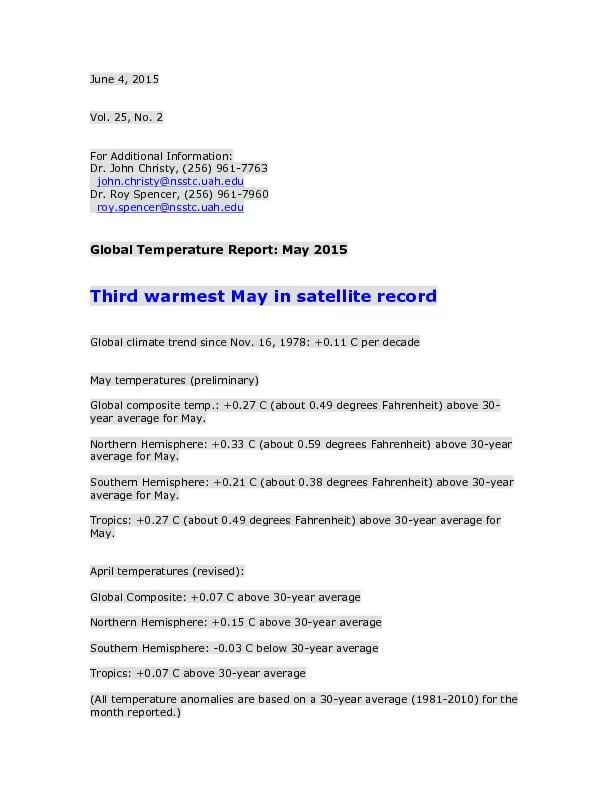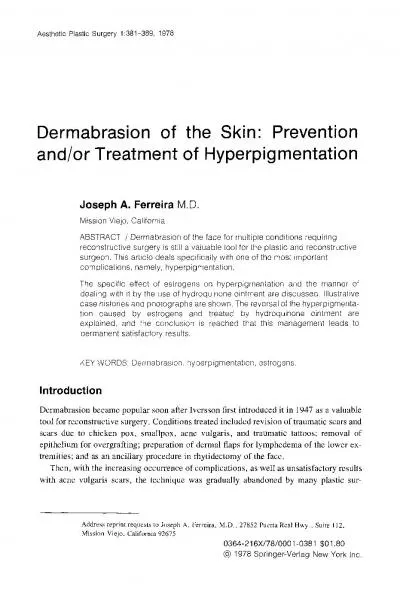PDF-Global climate trend since Nov. 16, 1978: +0.11 C per decade May tem
Author : kittie-lecroy | Published Date : 2016-08-23
May 2015 had the third highest global average May temperature in the 38year global satellite temperature record said Dr John Christy director of the Earth System
Presentation Embed Code
Download Presentation
Download Presentation The PPT/PDF document "Global climate trend since Nov. 16, 1978..." is the property of its rightful owner. Permission is granted to download and print the materials on this website for personal, non-commercial use only, and to display it on your personal computer provided you do not modify the materials and that you retain all copyright notices contained in the materials. By downloading content from our website, you accept the terms of this agreement.
Global climate trend since Nov. 16, 1978: +0.11 C per decade May tem: Transcript
Download Rules Of Document
"Global climate trend since Nov. 16, 1978: +0.11 C per decade May tem"The content belongs to its owner. You may download and print it for personal use, without modification, and keep all copyright notices. By downloading, you agree to these terms.
Related Documents














